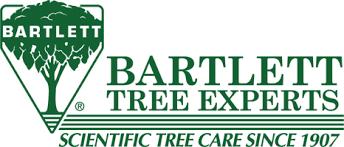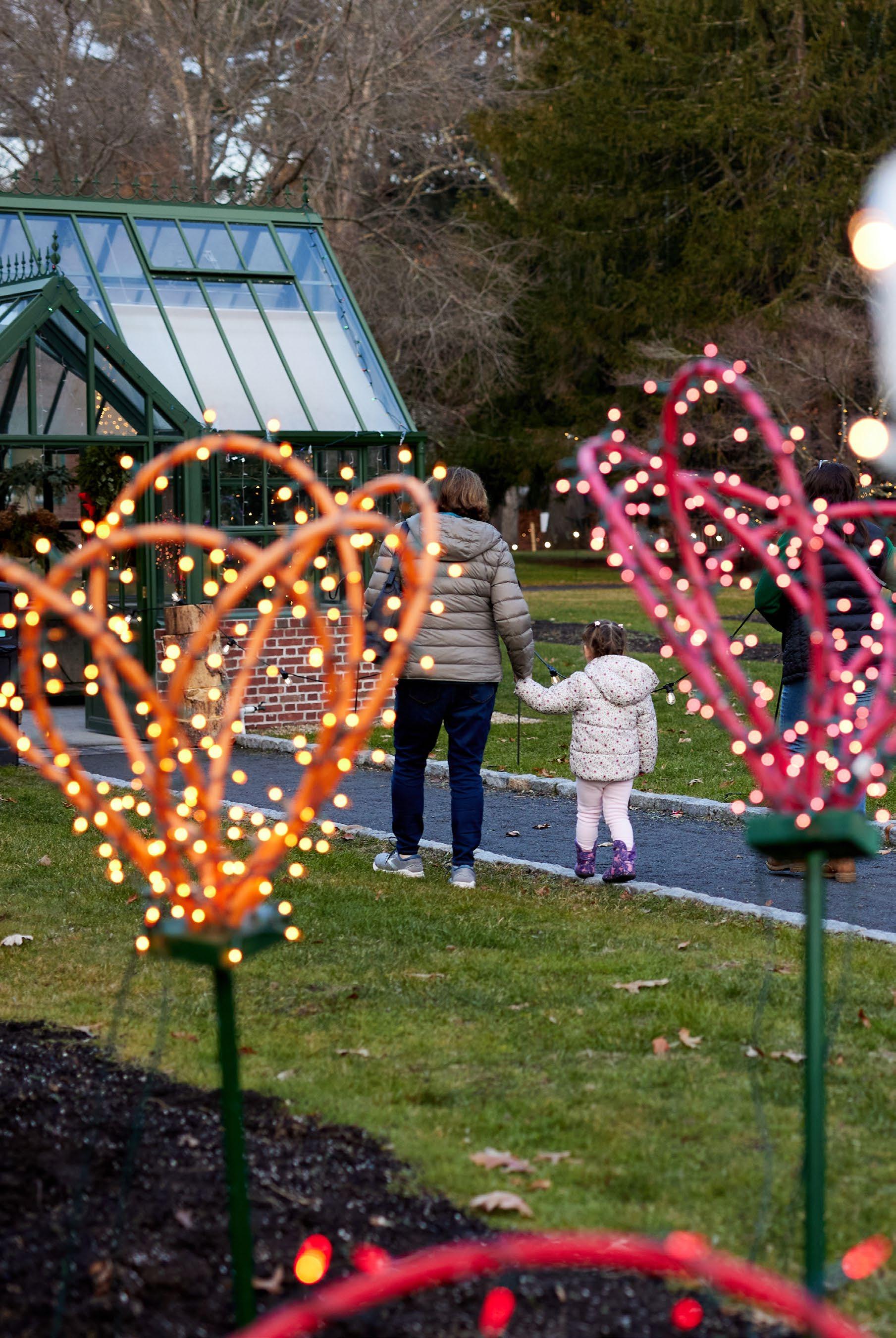






What a spectacular autumn we have all been enjoying! I hope you have taken advantage of the unseasonably warm weather as the season goes out in a blaze of glory. In similar fashion, our gardening year is not so much ‘winding-down’ as growing and extending.

Fast on the heels of a successful Fall Flower Show, we hosted around 120 guests for the 121st Honorary Medals Dinner. It is always a joy to update our supporters on the success of the past year and to celebrate those who are receiving honorary medals. Every one of them has made an exceptional and noteworthy contribution to horticulture over, in most cases, a lifetime of service, advocacy and professional practice. It was a particular joy to recognize two noteworthy national leaders in landscape architecture, Matthew Cunningham and Tom Ryan, both based here in Boston. A wonderful keynote by our George Robert White Medal Honoree, Douglas Tallamy, emphasized the impact that many individuals can have in their home gardens and the impact we are able to have as horticultural organizations through our collective audience. Look for more of this theme over coming years!
This particular issue echoes this theme quite well. Firstly, you’ll see an article about the pioneering role this Society played in the School Gardening Movement in the USA. It remains to this day a guiding light for us and many others, needed now perhaps more than ever.
continued on page 4

James Hearsum speaks at the 121st Honorary Medals Dinner
Secondly, this issue marks the first Leaflet of our new Editor, Dave Barnett. Dave is an esteemed horticultural leader, a 2024 Gold Medal Winner and a good friend and advisor to me. We are delighted that he has agreed to take on the task and look forward to him shaping it in his own way. Volunteers are the heart of our Society and appreciated greatly – there are always opportunities.
As the regular garden season winds down, we look forward to welcoming you, your families and friends to the 2024 Festival of Trees as guests and as volunteers. Please look out for our end-of-year updates and communications highlighting ways you can support our mission to help everyone grow plants together for health, happiness and a better environment.
James Hearsum President & Executive Director

Iam pleased to introduce myself as the new Editor-in-Cheif of Leaflet, and I look forward to working with James and Meghan and all the contributors to this newsletter of Massachusetts Horticultural Society.
First and foremost, I am honored and humbled to be given this opportunity to follow in the footsteps of Wayne Mezitt. Over the past few years Wayne served as Editor-in-Chief of Leaflet, and I always looked forward to his insightful and informative articles, including his “In First Person” column. I have long admired and respected Wayne for his lifetime of leadership and exceptional accomplishment in the horticultural industry. Indeed, his leadership and commitment as MHS Board Chair in recent years is what inspired me to accept this role as editor, and I only hope that I can adequately fill Wayne’s shoes.
Taking on this role feels right for many reasons. I recently retired from Mount Auburn Cemetery, which was founded back in 1831 by the Massachusetts Horticultural Society, which had just been established in 1829. Although the two organizations went their separate ways in 1835, we have always maintained a strong collaborative relationship. During my 28 years at Mount Auburn Cemetery, starting in 1993 as Director of Horticulture and continuing through my last 13 years as President & CEO, I enjoyed working with many members of the staff and board of MHS on various projects, and now I look forward to supporting the Horticultural Society in this new volunteer role. Collaborating with colleagues to provide timely information via the Leaflet to support the MHS mission of “encouraging the science and practice of horticulture and to developing the public’s enjoyment, appreciation, and understanding of plants and the environment” is something I am truly looking forward to.
Dave Barnett Editor-in-Chief
We are proud to have recognized seven incredible medal recipients for their contributions to horticulture for the public good:
The George Robert White Medal of Honor
Douglas W. Tallamy
The Thomas Roland Medal
Matthew J. Cunningham
Gold Medals
David Barnett
Thomas R. Ryan

Silver Medals
Patrick Chassé
Dr. Barbara E. Millen
Murphy Westwood, PhD




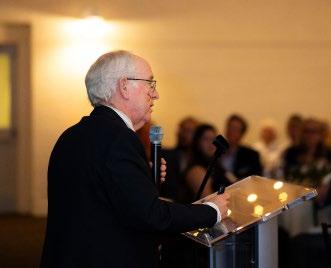


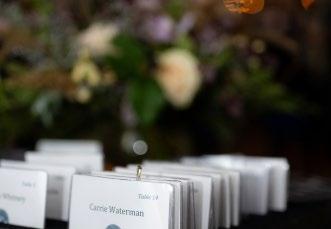

Drawing Botany:
The Sex Life of Flowers
Saturday, November 9 9:30am-3:30pm
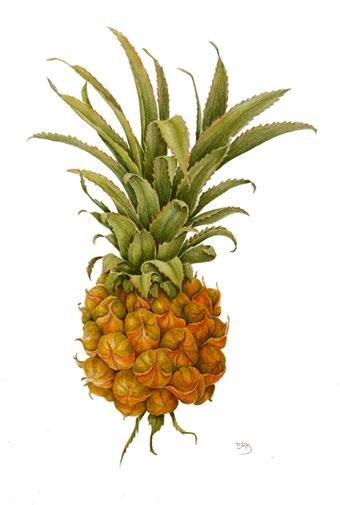
© Betsy Rogers-Knox
Beyond Basics: A Closer Look at Composition
Tuesday, November 19 9:30am-1:30pm

Hands On Workshop!
Holiday Boxwood Topiary Tree
Tuesday, December 10 10-11:30am

Drawing and Painting for the Petrified November 16 & 23 9:30am-1:30pm

Floral Design: Thanksgiving Florals for your Table November 16 10-11:30am
© Jan Boyd

Sketchbook Serendipity with Calligraphy
December 2 & 3 10am-3pm

Holiday Greens Workshop with NEUHSA
Wednesday, December 11 10am-12:30pm

Celebrating the Season: Holiday Card Workshop Saturday, December 7 9:30am-1:30pm

Floral Design: Holiday Floral Arranging for Entry Tables & Buffets
December 14 10-11:30am
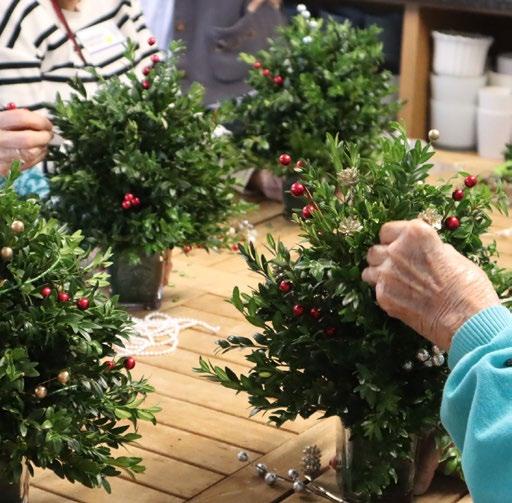
Hands On Workshop!
Holiday Boxwood Topiary Tree
Wednesday, December 18 10-11:30am

Greenhouse Botanicals:
Painting Indoor Plants
January 16, 21 & 23, 2025 9:30am-12:30pm
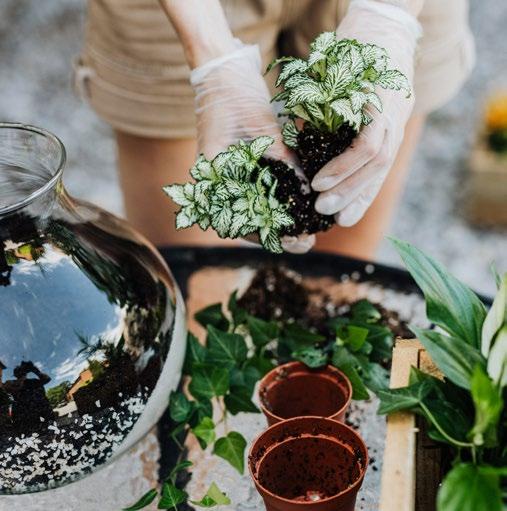
Terrarium Workshop
Saturday, March 15, 2025 10-11:30am

© Carol Ann Morley
Pen & Ink Techniques for Beginners
January 3, 7 & 10, 2025 11am-4pm

© Betsy Rogers-Knox
Introduction to Composition
February 4, 2025 9:30am-1:30pm

Nature in Ceramics: Designing with Sgraffito Saturday, March 22, 2025 10am-1pm

Introduction to Silverpoint on Paper
January 14 & 15, 2025 10am-1pm © Kathie Miranda

Hands On Workshop!
Indoor Herb Gardens for Winter February 22, 2025 10-11:30am

Create Your Own Flower Pot Figurines Wednesday, May 14, 2025 10am-1pm

Join us this holiday season at the Garden at Elm Bank! Follow the walking path through lighted gardens and an elaborate train display to discover enchanting historic trees, join a fun scavenger hunt, and participate in an exciting holiday tree raffle.
Get your preferred tickets today -timed slots will fill up quickly! Advanced purchase of timed tickets is required, tickets will not be sold at the door and peak times are expected to sell out.
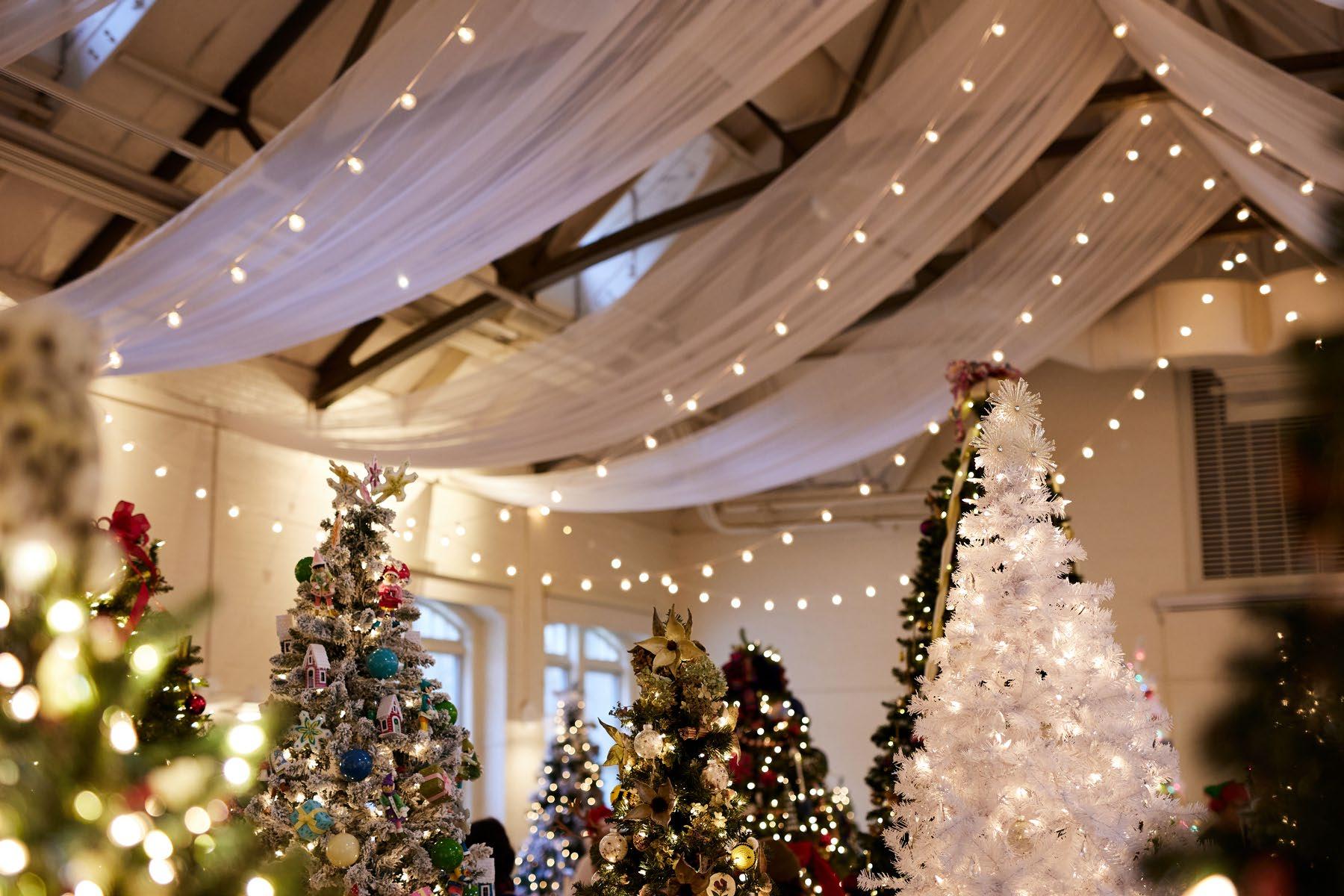
Shop at Green Partner businesses to receive 10% off with your MHS Membership card!

Jefferson, MA

Lexington, MA

Hopkinton, MA
Chelmsford, MA
Hingham, MA
Lincoln, MA

Marianne Orlando is a landscape architect turned freelance illustrator who loves plants, and does commissioned drawings of homes, pets and people. You can see samples of her work at www.marianneorlando.com
By John Lee
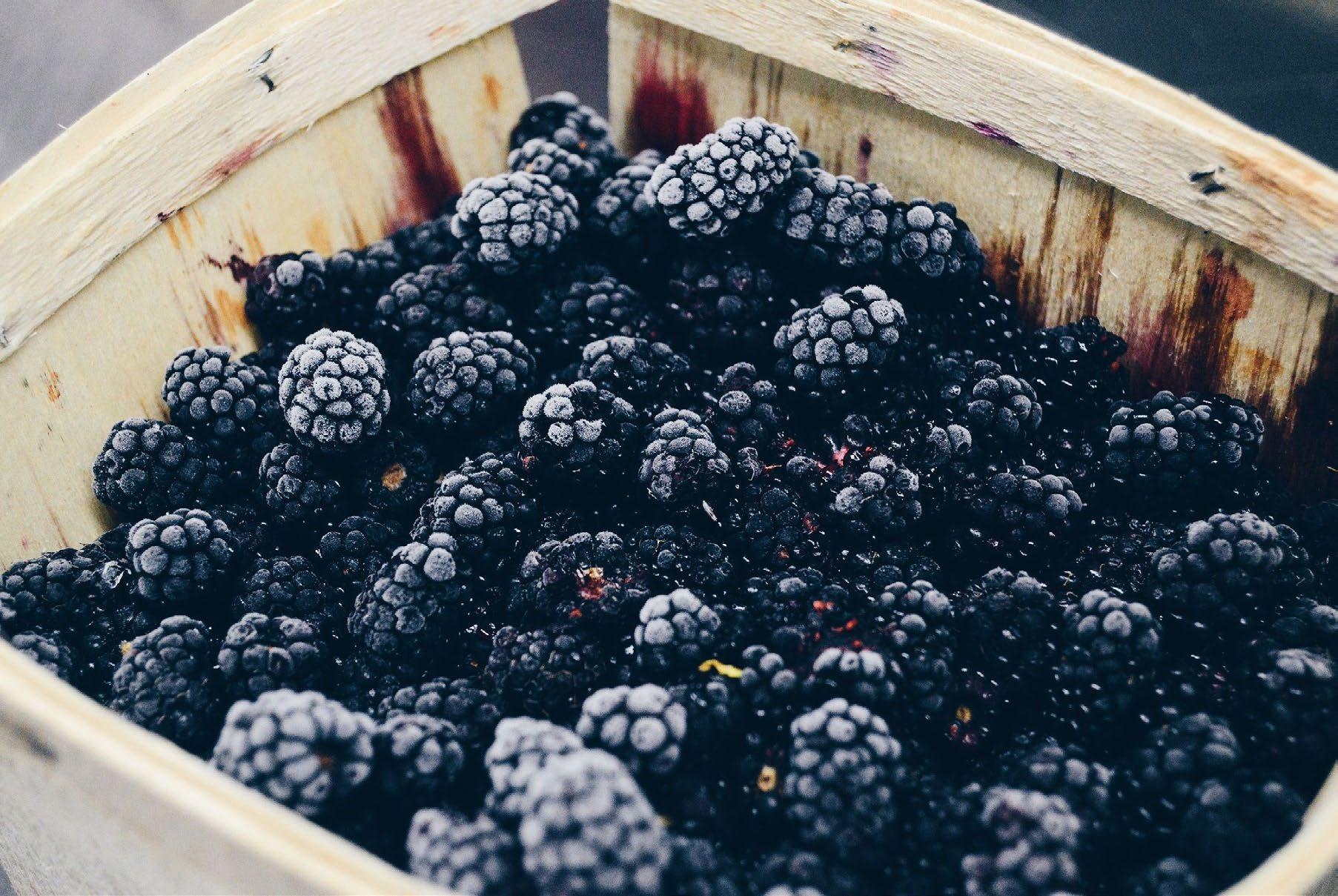
IJohn shares stories of Bert and Brenda and their gardening wisdom. These chronicles feature recipes, tried-and-true gardening practices, and seasonal struggles and successes. Bert and Brenda were first introduced in the March 2022 issue of Leaflet.
t had been a long but successful summer in the gardens. Most of the garden-wrecking weather had mercifully stayed to the north and the droughty weeks had long-since been compensated. True, however, the droughty weeks had done a job on the blackberry harvest. The best of the picking could not be reached by hose because the patch was at some distance from the usual gardens. This was unusual. Bert could not remember a year when the blackberry harvest had been so paltry. He was wont to put the blame on avian predators or deer. But, for sure he felt, though deer may pillage leafy greens, melons and pumpkins (especially in dry weather when the brooks were drying up), it was the winged foe that did the dirty work in the brambles (nevermind the blueberries!). What with one thing or another, Bert had simply not gotten
around to netting the blueberries this year so there was no-one to blame but
himself. Cuss out the birds as he might, he knew why there’d be a few less blueberry pies this year (unless the neighbor had a surfeit of berries that she was willing to share!). The saving grace was, as if luck had anything to do with it, this year was the first in many that he’d had a really good black raspberry harvest and Brenda had turned most of them into jam or frozen them for pie-filling at some later date. The summer was not ruined; Brenda would even turn a few into black raspberry syrup to dribble over ice cream or griddle cakes.
Meanwhile, although their harvest was in full swing, they had attended the MHS Fall Flower Show which they had been looking forward to. They
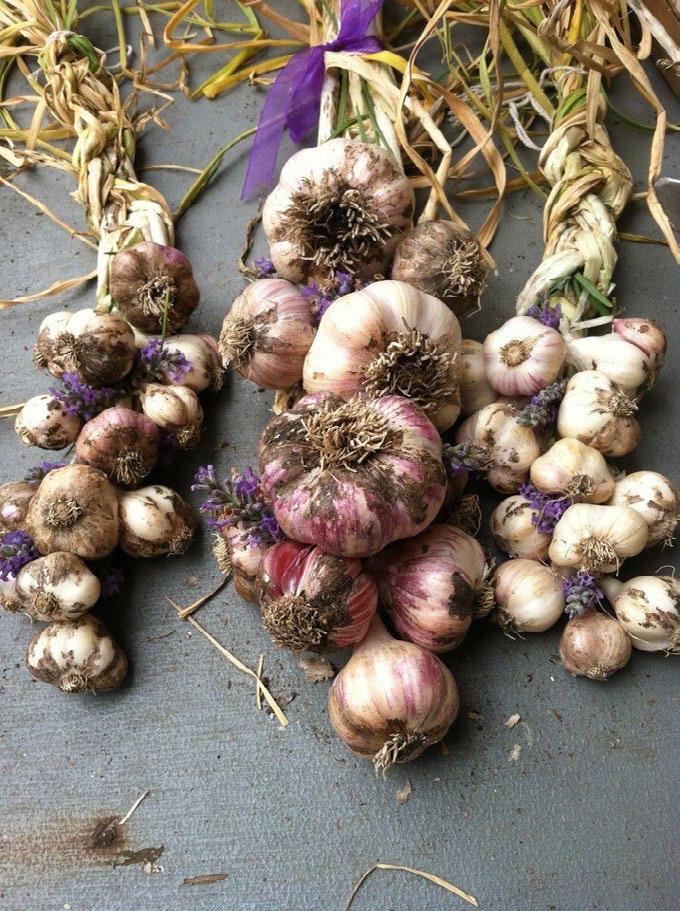
attended on Saturday. It was what used to be called a bus-man’s holiday. They met so many interesting people and vendors with similar passions and often very different ideas about gardening. Both agreed that they would certainly make the effort to go again, maybe get a booth for reasons as yet unclear.
They spent the following weeks hard at work in their gardens and (most likely) in front of the stove. Bert planned to pull the onions if the weather looked decent. He usually just pulled them, gently knocked the soil from their roots and laid them where he pulled them to let them begin to cure. Bert felt that doing so helped the onions develop a drier outer skin in the direct sunlight which, in turn, improved storage. He would start early in the morning and if the day was good, the spindly roots would dry by evening. Then he could gather them and tuck them away in a cool, dry shed until the tops dried. They could then be trimmed
or braided should he or Brenda have a quiet moment for later use as she might see fit. This generally happened about the time the playoffs commenced. If the Red Sox were lucky enough to make the playoffs, it could take a couple of weeks before the onions were finished. Needless to say, the same might be said of the garlic which he usually harvested toward the end of September when the tops were browned up and dry. These were similarly harvested. Later he would set the largest dozen bulbs aside for the following year’s crop.
Of course, come October, it wasn’t sugar plums that danced in his head. It was early frost. His earliest memories were that the first full moon after Labor Day usually could be relied upon to wreak havoc on the unwary (weary?) gardener. That seemed not to be the case these days. Lately, his first frost (or at least the first scary morning when


the tomatoes, eggplant or peppers looked haggard at best) might not darken his door until at least two weeks lor more later. Nevertheless, he kept a hose ready just in case there was an unexpectedly clear, cold early morning and the air temperatures hovered near freezing. Were that to be the case (and he’d noticed that the bed clothes were insufficient), Bert would hurry to the tenderest gardens at the crack of dawn to gently mist his most tender crops as he cussed himself for not covering them. The misting often prevented serious damage due to the latent heat of freezing – something he really could not wrap his head around but had learned about it from news reports about citrus growers in Florida when their crops faced a freeze. If it worked for them, what harm could be done? At least, despite shivering in his bathrobe, he felt better about trying to save the last few pickings even at the risk of catching a sniffle.
As the leaves began to fall, he and Brenda would begin to gather them into piles near whichever garden
they had planted their root crops. Eventually, some of them would end up in the root cellar (the ones that she did not can up). As often as not, however, their larder ran out of space, so the root cellar was the next best option. Honestly, they preferred the carrots, parsnips and beets left in the ground under a thick layer of leaf mulch because they would store sugars to survive the cold and, if mulched properly, would not freeze. They would not grow as their tops had frozen and they could rest there until the cellared crops had run out – something to look forward to in the winter doldrums and spring was more than wishful thinking.
Really, October was the beginning of the end and the end of the beginning every year, the transitional month when looking back and looking forward kind of amounted to the same thing. As usual, there was much to share and plenty to learn. This year, maybe they could pawn off a bit of the butternut bounty for a few more baby blue Hubbard which Brenda actually preferred because it had a tougher skin and therefore kept better. She also preferred its buttery taste and a slightly grainy texture. Bert had had a short crop this year. Was this a coincidence or had he saved seed for too long? Only time would tell: he would compare some store-bought seed to some of the saved seed if he did, in fact, trade away a few of the butternut.
John Lee is the retired manager of MHS Gold Medal winner Allandale Farm, Cognoscenti contributor and president of MA Society for Promoting Agriculture. He sits on the UMASS Board of Public Overseers and is a long-time op-ed contributor to Edible Boston and other publications.
By Catherine Cooper
November: autumn is marching towards winter and most leaves have already fallen with only oaks and some beech keeping a tight grip on their desiccated foliage as if to repel the chill of winter’s impending blasts. With the movement towards a quieter season as far as gardening is concerned it is a time to finish up end-of-season chores as well as look back on how the year has gone, what has worked, what didn’t and to therefore reflect on whether anything could or should be done differently in future.
This fall I have been more assiduous in cutting back all my perennials. In past years some
were left so their seed heads could feed the birds and with others I didn’t make time to do the work, which last year in particular meant voles had an abundance of hiding places with the result that they ate a lot of my echinaceas. Fortunately, these are resilient plants and in sufficient quantities that they made a suitable recovery this spring. So this year in an effort to reduce the amount of comfortable lodging for voracious rodents, I have cut back all perennials and also removed the spent stems of biennial evening primroses whose seeds the goldfinches have so enjoyed from mid summer right through fall. The evening primroses, while rather weedy looking plants, have proved to

My hydrangea looking the best it's ever been!
Plum blossom (Prunus mume) & Red Admiral butterfly (Vanessa atalanta)
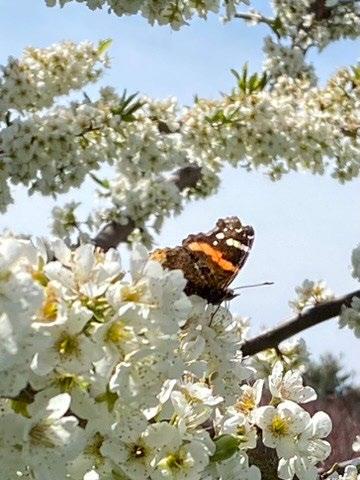
be a pleasing addition to a garden that is evolving more towards becoming a wildlife habitat. They have provided pollen and nectar for insects and hummingbirds and as summer progressed I have had the pleasure of watching a hummingbird sip nectar at the top of the plant while a goldfinch tucked into the seedpods lower down. If I had had more free time in spring I would have removed a number of these plants and therefore would have deprived myself from frequently seeing small groups of finches flitting from plant to plant. However, the finches spread as many seeds as they eat and I know I will be having to remove all the seedlings that will germinate in multiple wrong places such as at the front of the borders among the low-growing ground cover.
While I have continued with something of a laissez-faire approach to what grows in my garden, which has resulted in several interesting natives just popping up out of nowherewelcome purple-stemmed aster!, that is not to say that the garden is entirely without structure or wholly a collection of native
plants. I am quite the sucker for an unusual perennial, although my definition of that is completely subjective. However, I will say that I do share the European passion for what is known as “prairie planting” which when the trend began a couple of decades ago, it was done using North American native plants, which in Europe were often a novelty. Therefore, here I can have the best of both worlds, so to speak, by growing native but with plants that weren’t so familiar to me. However, regardless of which side of the Pond you are, our gardens are often graced with plants from around the world and mine is no exception.
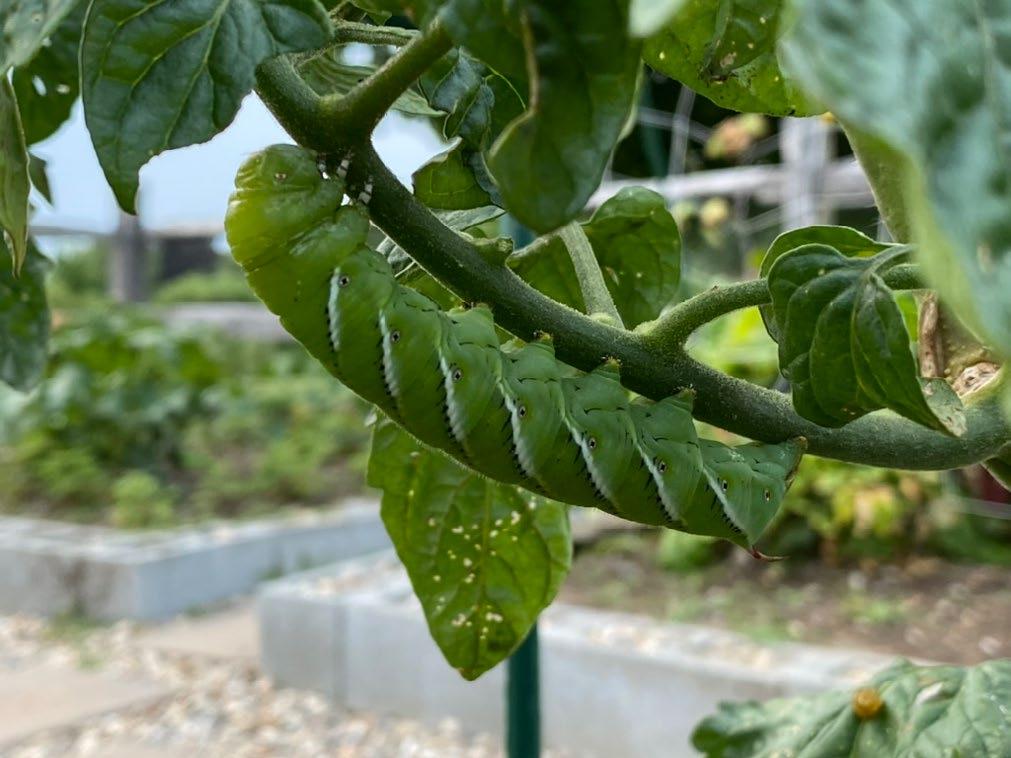
As I look back over the year, spring started full of promise. Due to the previous year’s rainfall, spring’s warmth brought forth prolific flowering on fruit and ornamental trees and as May came round everyone was amazed at how stunning the hydrangeas were. The amount of blossom also brought out an abundance of pollinators along with overwintered butterflies, however I have to admit I’m still not doing something right where butterflies are concerned as despite having nectar plants and milkweed for the monarchs, I have not seen many butterflies this summer. Maybe closer attention is needed to host plants.
Moths, or rather their caterpillars are a different story though. Our vegetable garden has not had quite the care it needed this year, partly due to being away for two weeks in June when it was left unwatered and untended. Most things did
okay, but the brassicas fell prey to cross-striped cabbageworms. The adult moths will produce several generations of hungry caterpillars during the growing season as our lack of attention in dealing with them went on to prove. The last generation has been the most destructive leaving the plants bare beyond skeletonized. They weren’t the only caterpillars to make an appearance this summer as one day I noticed half of one of our tomato plants was gone courtesy of what turned out to be three large tobacco hornworms. These impressive 3” caterpillars were amazing not only due to their size, but also their ability to avoid detection until they had consumed a decent amount of the tomato plant and grown to quite a size. Both cross-striped cabbageworms and tobacco hornworms are evidence of how our climate is warming as both can now be found in New England. The hornworms were relocated to some nightshade which I hoped made an acceptable substitute for my tomatoes and the tomato plant recovered to produce a belated crop of cherry tomatoes. Not really the way to stagger crop production, but there you are! And for the first time we also grew Swiss chard, whose long
cropping season and lack of pest damage more than made up for the devoured brassicas.
Summer brought forth the increasing amount of flowers that is my garden, but the peak moment of bloom which comes in September was suppressed by the lack of rain received in late summer. Where I live this past summer tended to produce heavy rainfall north or south of me, and gardening on sandy soil meant I am well aware of which plants are truly drought tolerant. Fortunately most of my choices are good, but there are one or two that in the most sunbaked parts suffered through September where we saw days on end with no rain.
However, I have come to adopt something of a philosophical attitude towards growing plants. I try to choose plants that at least stand a good chance of doing wellalthough who doesn’t occasionally try to push the boundaries? - but I have come to accept that if the weather
causes things to die, then there is opportunity to try something else.
While this past year has produced successes as well as a couple of setbacks the abundance of pleasure from being outdoors and interacting with nature has more than made up for occasional frustrations. I have seen an increase in wildlife, mostly welcome, although I know it was you, red squirrels, who ate all my pears in July, but as my garden is my place of peace, relaxation and discovery for me I cannot resent that I now share it with increasing numbers of wild creatures.

Born in England, Catherine learned to garden from her parents and from that developed a passion for plants. Catherine works assisting customers at the newest Weston Nurseries location in Lincoln. When not at Weston Nurseries, she can often be found in her flower beds or tending to an ever-increasing collection of houseplants.

The school garden is a place for children to be happy in. Many of a child will remember it with affection, when he reaches the adult age, and we may naturally expect that when he acquires wealth he will remember it in a substantial way.
Massachusetts Horticultural Society Transactions, 1890, p. 170
In 1891, Massachusetts Horticultural Society (MHS) established the first school garden in the United States at the George Putnam School in Roxbury, Massachusetts. MHS members lamented that schools were abolishing recess and teaching horticulture and botany inside the classroom. The members believed that children should develop a lifelong appreciation for the natural world and horticulture with direct observation and work in the soil. Children were the future of MHS and horticulture.
MHS’s first foray into children’s gardens was initiated by the Window Gardening subcommittee, led by Henrietta L. T. Wolcott in 1878. While the committee’s initial efforts met with limited success, school gardens in Europe inspired a renewed effort in 1890. Its goal was to get children out of the classroom and into the garden for a “hands on” horticulture experience. MHS sent Henry Clapp, a member of the Window Gardening Committee and the principal of George Putnam school in Roxbury to Europe to study school gardens. On his return, Clapp gave a lecture on School Gardens and in 1891, a wildflower garden was installed at the Putnam School. MHS’ support of the school garden movement in America was focused and generous. It provided monetary and in-kind support, prizes and venues for exhibitions, publications, many volunteer hours and publicity. From this small garden, the School Garden Movement grew in leaps and bounds throughout the United States and by 1902 there were 75,000 school gardens in the United States. Between 1929 and 2016, MHS awarded 11 Honorary Medals for work relating to school gardens.
Educating children in horticulture was an important goal for MHS and continues to this day. MHS’s children’s programing adapted to meet the needs of a changing society. Its efforts included educational and professional programs, monetary and in-kind contributions, publications, monetary and medal awards for children and their exhibitions. During the mid twentieth century, MHS invested in the Plant Mobile and instituted the Hub Box Program that trained hundreds of volunteers to teach in public schools. Today the Society continues a vibrant Plant Mobile program, on-site programming at the Gardens at Elm Bank and provides hands on opportunities for young people to work in the gardens as training for a career in horticulture.
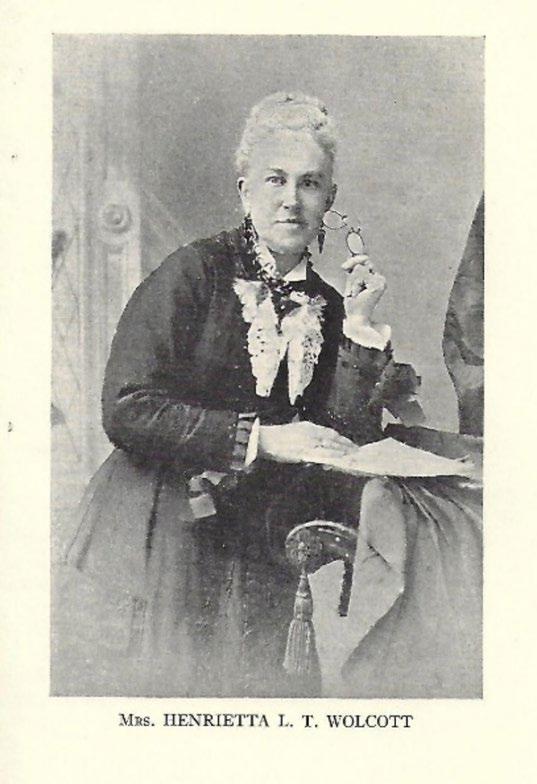
Wolcott was the driving force behind the School Garden Movement in the United States. While little is known about Walcott, we do know that in addition to her work at MHS, she was active in many causes that included the Women’s Suffrage Movement in the 19th century along with Julia Ward Howe, and with charitable work with destitute girls. Walcott appears to have been a strong, driven, untiring and opinionated woman. Her work with MHS was respected by all. In daily life, she was entertaining and cheerful. Albert Emerson Benson. History of the Massachusetts Horticultural Society. Boston: 1929, p. 389. An Appreciation after Walcott’s death in 1903, was published in MHS' 1903 Transactions.
The original Plantmobile appeared in the 1960s and was a garden center on wheels, “an old hearse, painted yellow and gaily splotched with flowers.” It hauled a trailer filled with loam. Boston Globe, May 18, 1969, p. B72. A Ford van replaced the hearse in 1975.

△ Children in the George Putnam School Garden. MHS 1905 Transactions, p.305. ▽ Swan School Gardeners, on the corner of Park and Washington Street, Medford. MHS 1895 Transactions, p. 299. Wild and native plants were the principal plants in the garden. During the summer months children also cultivated flowers to deliver to hospitals twice a week.

The next meeting of the Book Club is on Tuesday, November 19 at 1:30 pm. in the Crockett Garden. All are welcome to attend.
This is the schedule for the Club’s upcoming book discussions:
November 19
Mischievous Creatures by Catherine McNeur

December 17
The Book Club will be sharing their favorite gardening magazines and catalogues!


January 21
The Comfort of Crows by Margaret Renkl
COME VISIT!
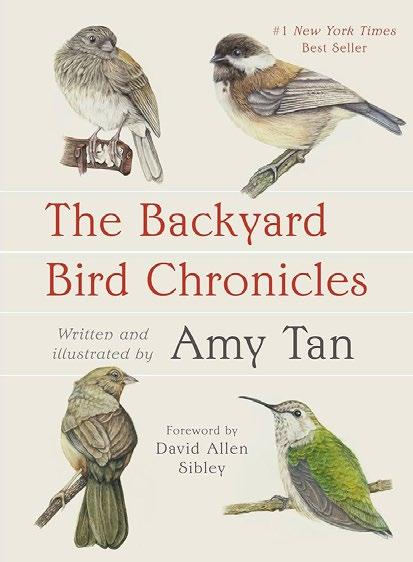
February 18
The Backyard Bird Chronicles by Amy Tan
The Library is open on Thursdays from 10am - 1pm and by appointment. Please email Library & Archives Manager Maureen O’Brien for an appointment if you want to schedule a visit.
